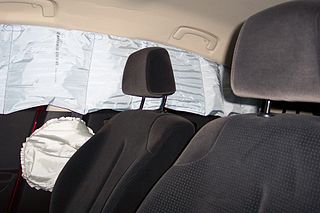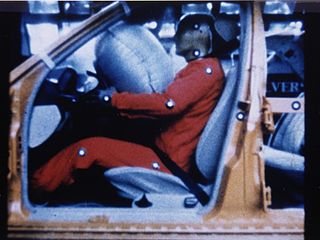Car safety features are the first things you must check when buying a car, either a used or brand new. Try on the seat belts and test drive the car — these are the first two actions you must do before deciding on a car to buy. Test drives must be made on the evening to ensure if the headlights are bright enough for night travel. Inspect the head restraints, roof structures and windshields very carefully in such a way that these vehicle parts do not affect your visibility.
Seat belt
The seat belt keeps you within your seat during a crash while reducing your chances of hitting the steering wheel, the dashboard or the windshield during a collision. Seat belts are particularly important during a head-on collision. An additional feature of the seat belts is a seat belt pre-tensioner that retracts the seat belt to eliminate excess slack immediately during a crash. An adjustable upper belt allows you to vary the setting of the shoulder strap according to the body size of the user. This feature encourages the passenger to always wear the seat belt since it adds on shoulder belt comfort.
Air bags
Another important car safety feature is the air bags. Cars generally include front and side airbags for total cushioning in times of vehicle crash. Other car models also have curtain airbags.

Front air bags are designed to inflate instantaneously with vehicle impact to prevent the occupant from hitting the windshield, steering wheel and dashboard. It also provides the passenger a cushioned relief after the collision.

Side air bags reduce the chances of passengers from hitting the inner side of the door or other objects also during a crash.
Head restraint
A head restraint is an extension of the vehicle seat to limit head movement during a crash particularly during rear impacts. The head restraint can significantly reduce neck injuries during a crash. Head restraints may be adjusted manually or automatically and are required in the front seats. A dynamic head restraint always provides a reliable protection to the passenger.
Anti-lock brake system
An anti-lock brake system or ABS avoids locking of the vehicle wheels during sudden or panic braking, allowing the driver to appropriately control steering and avoiding collision. The anti-lock brake system also includes a brake assist which detects an emergency braking by sensing the speed and force exerted by the driver on the brake pedal and boosting power as required. Here’s a video on Mitsubishi L200 Anti-lock Braking System.
Traction control
A traction control system controls the amount of slippage of the drive wheels after exerting excessive power to improve vehicle stability. The control system adjusts the engine power output automatically and generates braking force to the selected wheel or wheels during acceleration.
Electronic stability control unit
An electronic stability control unit is included to help drivers achieve reliable control of their vehicles when performing extreme steering maneuvers. An all-wheel drive system combined with traction control prevents the drive wheels from slipping after exerting excess power during acceleration.
